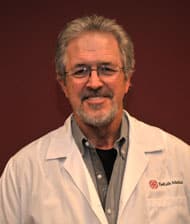
For example, the most common symptom of endometriosis is pain, but only 1 in every 5 women with the disease experiences pain, Dr. Lyons says. “In fact, some women only discover they have the disease when they are treated for other conditions such as ovarian cysts.”
Endometriosis occurs when the endometrium — the tissue that lines the uterus, or womb — grows outside the uterus or on other organs in the body. While it can occur in any woman, it is most often diagnosed in women from their teens to the 40s. Painful menstrual cramps, chronic pain in the lower back and pelvis, intestinal pain and bladder irritability are some symptoms of endometriosis. Rarely, abnormal bleeding may be associated with this disorder. Medical therapy, such as pain medicines or hormone therapy, may be used to relieve symptoms, but the only way to treat the disease effectively is surgery, says Lyons.
While endometriosis can affect fertility in some women, it is not the major cause of infertility that people have believed in the past. “Women with endometriosis have a slight decrease in fertility compared to other women, but many choose surgery because hormone therapy is incompatible with attempting pregnancy,” he says. The minimally invasive surgery usually requires no more than a 23-hour stay, with some women going home the same day, and back at work in two weeks or less. Surgical therapy rarely includes removal of reproductive organs, focusing on aggressive removal of only the endometriosis tissue.
Because endometrial symptoms are vague, they are often attributed to other diseases, such as irritable bowel or bladder syndromes, says Lyons. “If there is pain or other symptoms that might be endometriosis, it is best to have the diagnosis confirmed,” he says. “It is important that all questions be fully answered and no symptoms, even vague symptoms, be glossed over. While there is no cure, there are effective treatments.”
NEED A DOCTOR? Physicians at DeKalb Medical Physicians Group Montreal OB/GYN are accepting new patients.Call 770.268.0150 or visit www.montrealobgyn.com.
For a list of all DeKalb Medical Physicians Group primary care physicians and specialists, visit www.dmpg.org.
* Office on Women’s Health, U.S. Department of Health and Human Services.
Endometriosis Fact Sheet: What is Endometriosis? www.womenshealth.gov/publications/our-publications/fact-sheet/endometriosis.html

